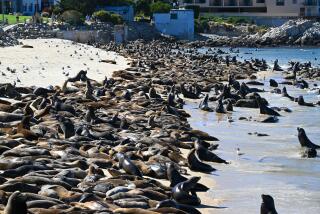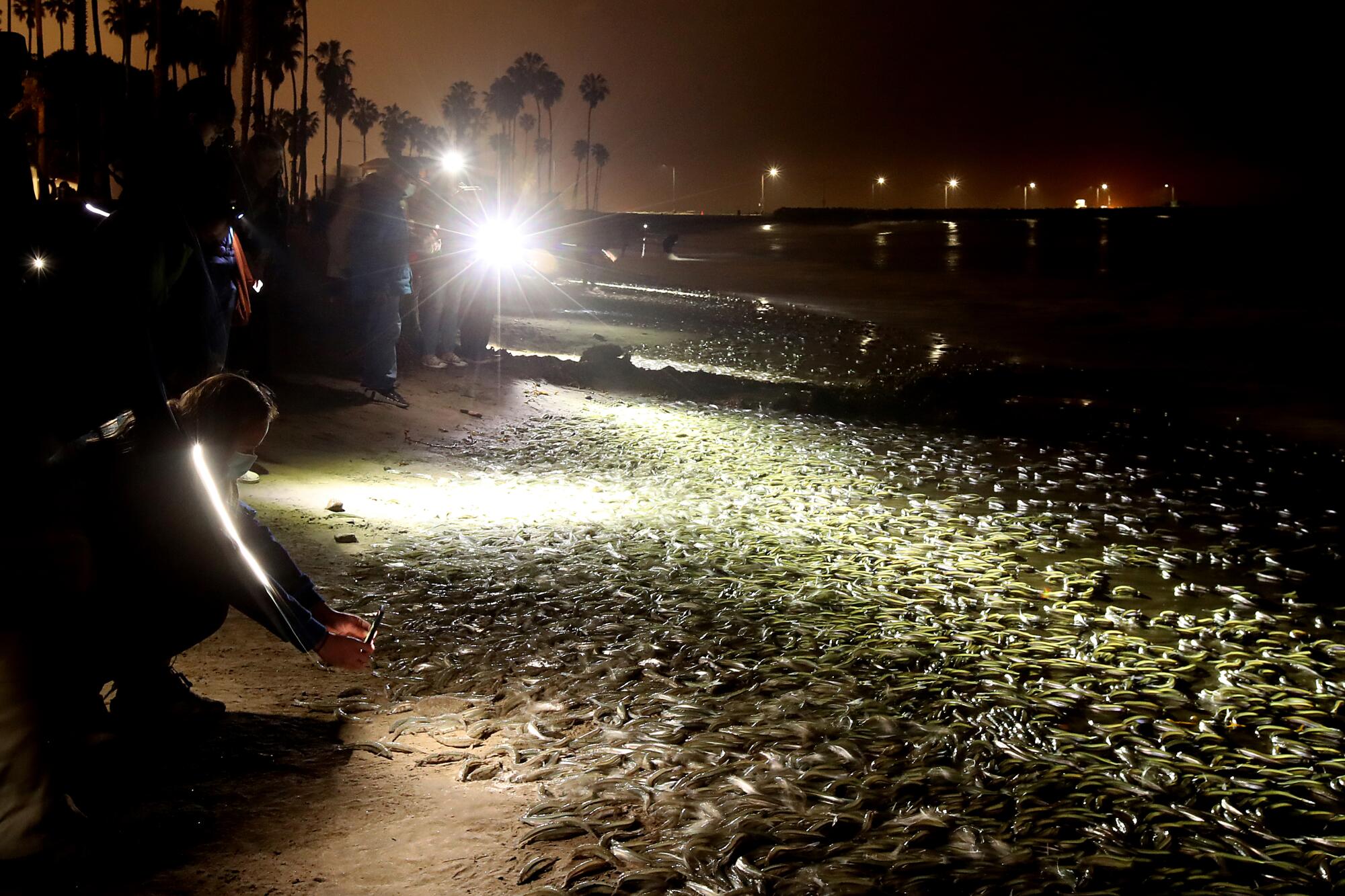
- Share via
Sex on the beach is best in the dark. Grunion know this. Each spring and summer, a few days after a full moon or new moon, the small, silvery fish wash ashore to spawn by the thousands on Southern California beaches.
Like the swallows’ annual return to San Juan Capistrano or the California gray whale migrations offshore, grunion runs remind us that wildlife survives in a sprawling city of millions. Though unknown to many, grunion runs are a local fixture. Coastal Native American people once relied on them for food. In the 1960s, Frank Zappa wrote and recorded an instrumental song called “Grunion Run” that featured the sounds of a guitar plugged into a fuzzbox.
On a recent night, about 100 visitors to Cabrillo Beach in San Pedro became voyeurs to the mating dance that happens shortly after high tide. It unfolds like clockwork. One moment the beach is empty. Then a wave crashes and deposits the wildly squirming fish on the wet sand to lay and fertilize countless eggs before receding back into the sea.
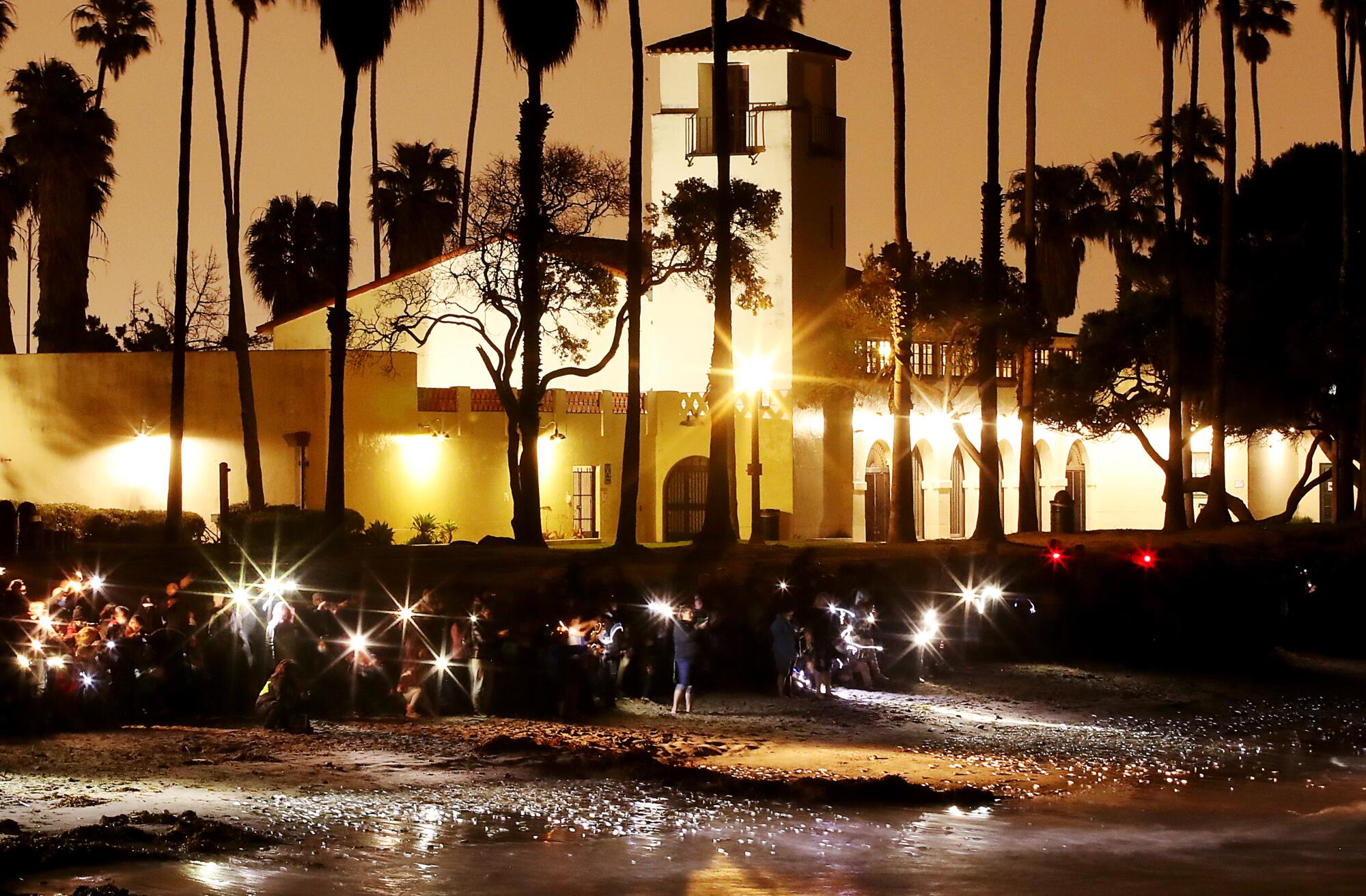
Basically, females dig nests with their tails and deposit eggs into the sand. Up to eight males try to mate with each female by curling their bodies around her. Milt flows down the female’s body to fertilize the eggs. Throughout the night more grunion slither up the beach, merging above the surf line.
How the grunion know when to run remains a mystery. It could be the pull of tides or the position of the moon. The eggs develop over 10 days and hatch with the next high tide. Most of the hatchlings are consumed by other fish and shorebirds higher up the food chain.
The fish are unique to Southern California and Northern Baja. They are essentially smelt. Most nights people are legally permitted only to watch the fish. Open nights happen during the season, and people with valid fishing licenses can catch an individual limit of 30 fish by hand. Beach erosion and coastal development threatens the fish’s spawning habitat, though experts say the species currently appears viable.
The next grunion run is expected to happen in San Pedro on June 16. Tickets for guided grunion run programs are available from the Cabrillo Marine Aquarium.”
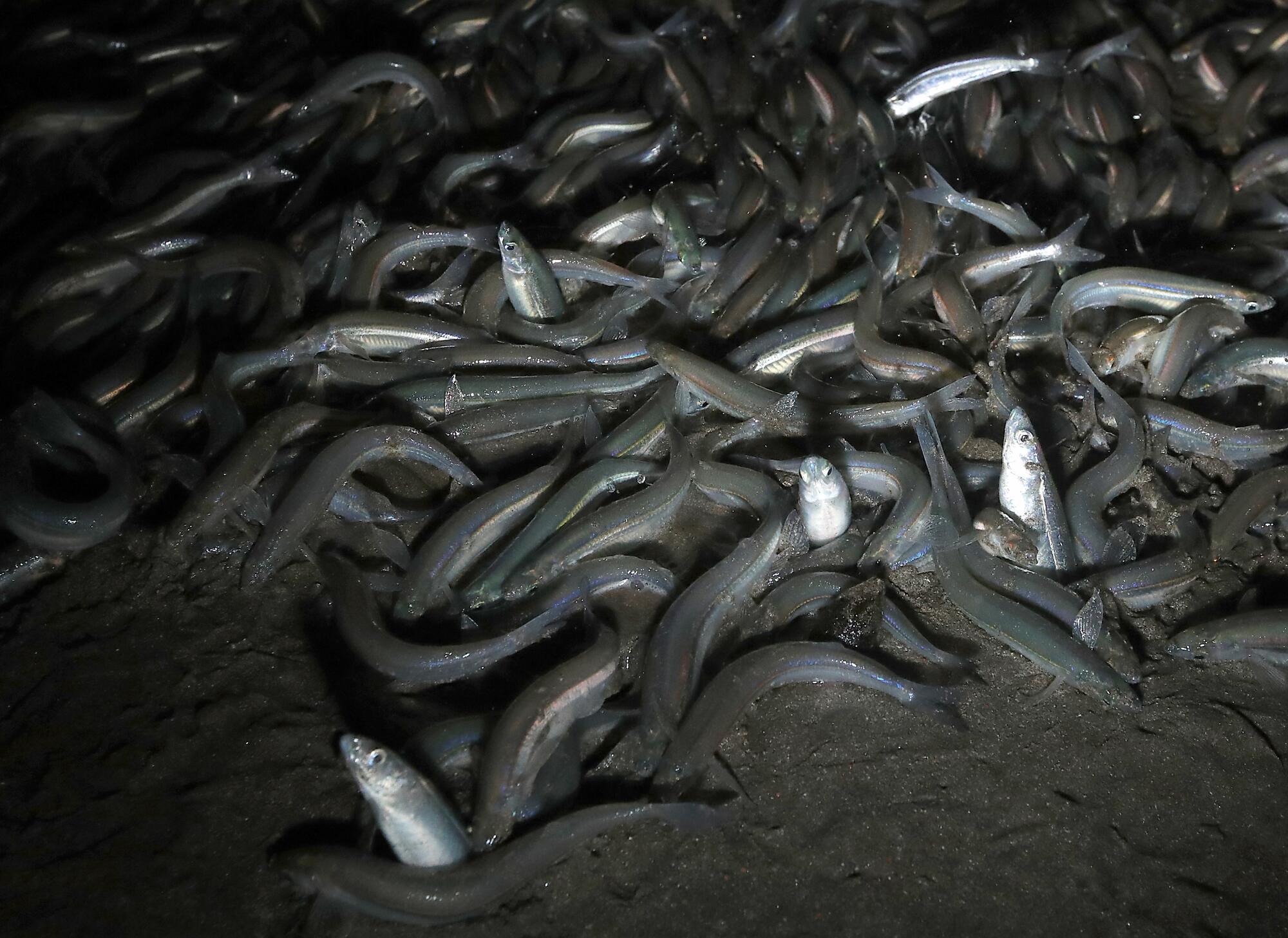

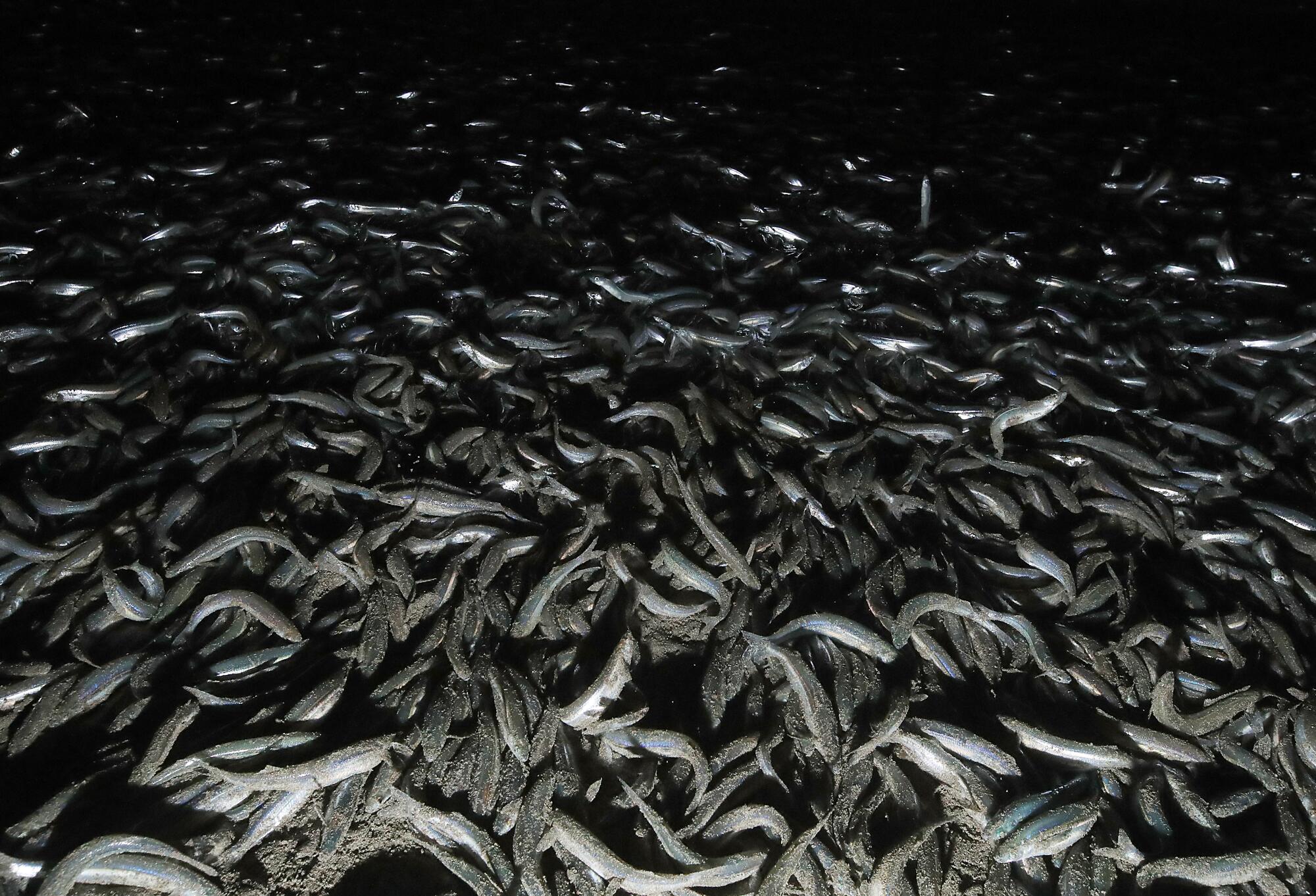

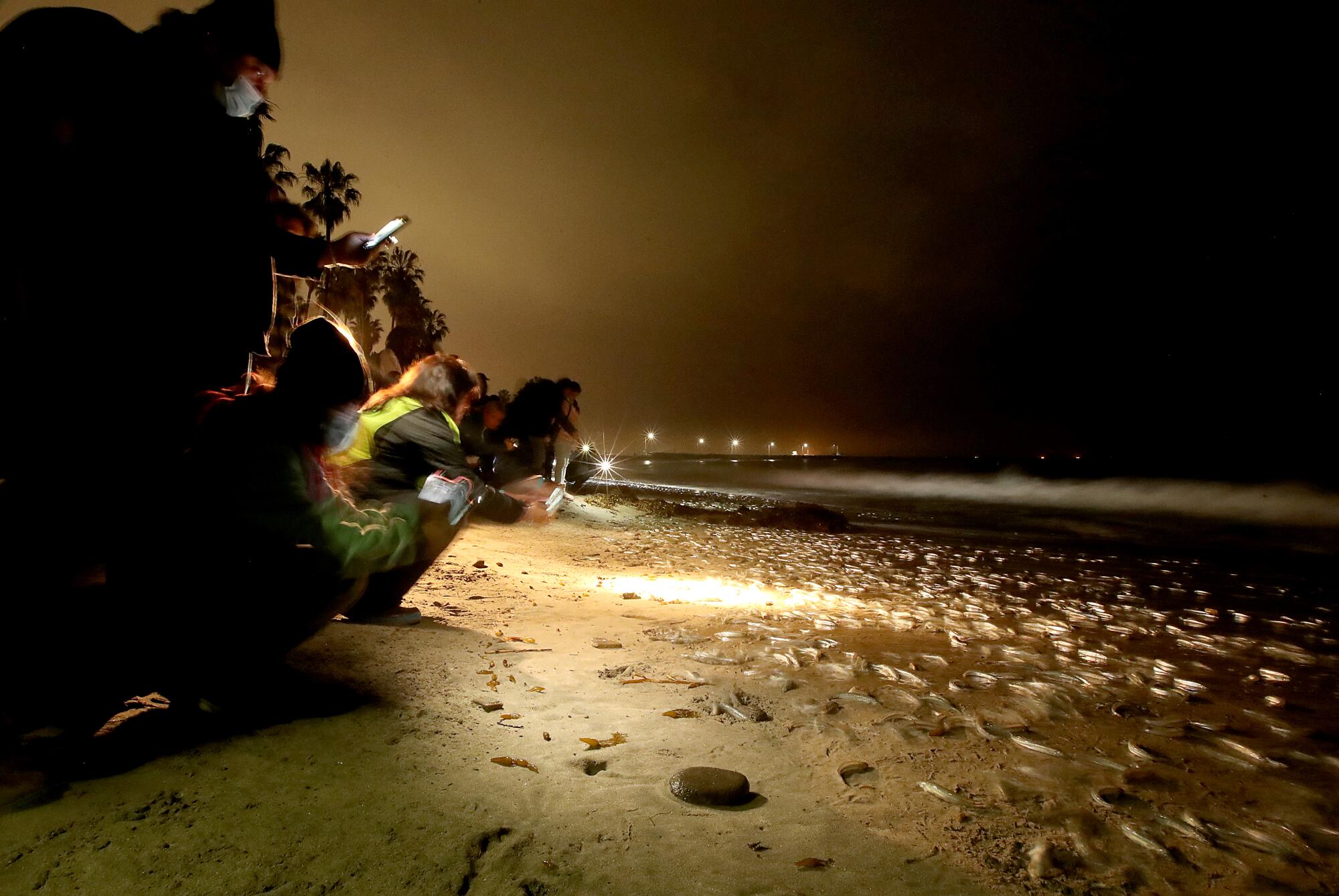
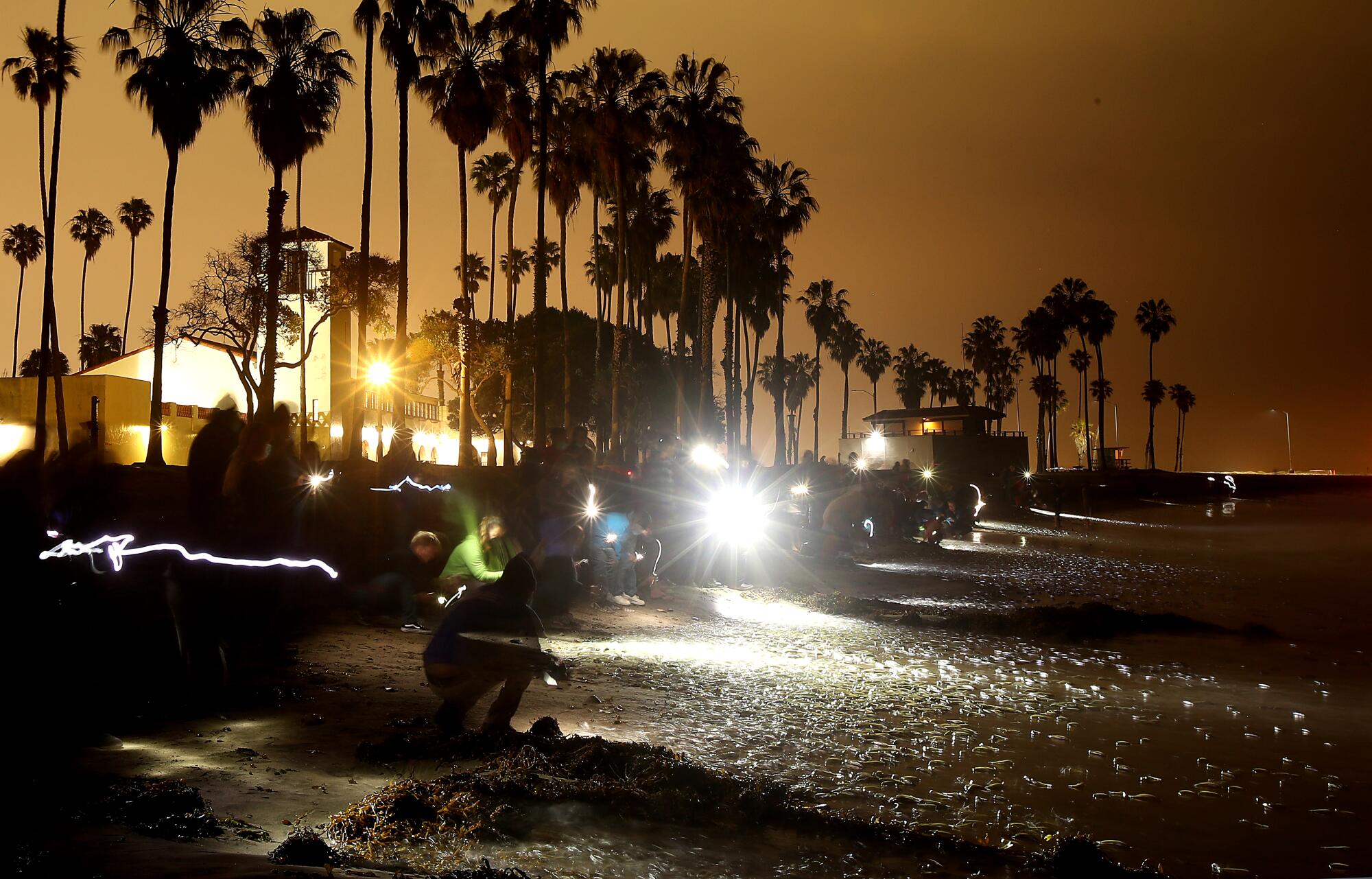
More to Read
Sign up for Essential California
The most important California stories and recommendations in your inbox every morning.
You may occasionally receive promotional content from the Los Angeles Times.

